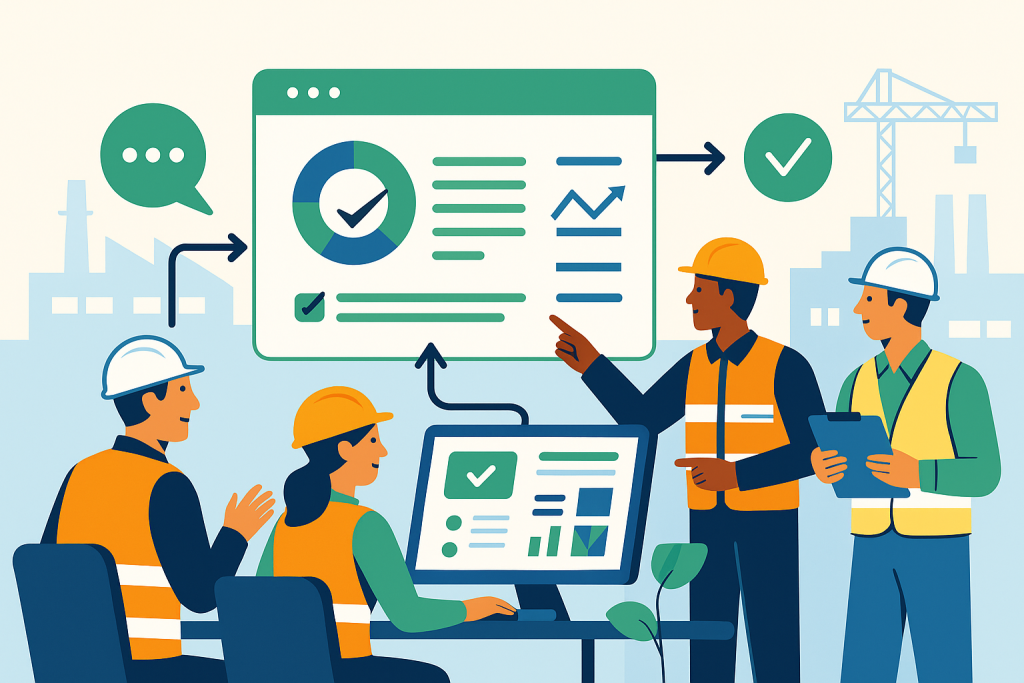
The Problem with Safety Silos #
When safety responsibilities are scattered across departments without coordination, hazards can be missed or addressed too late.
Keys to Effective Coordination #
Shared safety dashboards accessible to all departments.
Joint safety meetings across teams.
Clear role definitions for safety responsibilities.
The Risk of Uncoordinated Safety Efforts #
When safety operates in departmental bubbles, the results are predictable. The maintenance team might know a machine guard is faulty, but if that information isn’t effectively communicated to the operations team, they may continue to use the equipment. HR might manage return-to-work programs but lack insight from the safety team on the root cause of the injury. This fragmentation means that no one has a complete picture of the organization’s risk profile. It leads to recurring incidents, delayed hazard correction, and a perpetually reactive safety culture where teams are constantly putting out fires instead of preventing them.
Keys to Effective Cross-Functional Coordination #
Building a cohesive safety program requires breaking down silos and establishing clear channels for communication and collaboration.
Shared Safety Dashboards: Technology is a powerful unifier. A shared safety dashboard, accessible to leaders in every department, creates a single source of truth. When everyone can see real-time data on hazard reports, inspection statuses, and incident trends, it fosters transparency and collective ownership of safety outcomes.
Joint Safety Meetings: Regular, cross-functional safety meetings are essential for collaborative problem-solving. In Ontario, the Joint Health and Safety Committee (JHSC) is the primary vehicle for this, bringing together worker and management representatives from across the organization to review issues and recommend solutions.
Clear Role Definitions: To ensure nothing falls through the cracks, everyone must understand their specific part in the safety system. Having clear role definitions—from the frontline worker’s responsibility to report hazards to the supervisor’s duty to investigate them—creates an interconnected web of accountability.
Related Reading: For examples of metrics everyone can share, see Workplace Safety Metrics That Matter
#WorkplaceSafety #EHS #SafetyManagement #Collaboration #OperationalSafety




